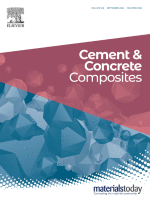
This study investigates the development of delayed ettringite formation in concrete made of recycled concrete aggregates (RCA) and in mortars with a recycled concrete filler. Experimental results are compared to a chemical model of delayed ettringite formation by Sellier & Multon (2018). Three concretes were formulated, one with natural siliceous aggregates and two others with two different RCA. Concrete and mortar samples were screened for one year for DEF damage. Results show that RCA based concrete did not develop DEF damage, but concrete made of siliceous aggregate did. Recycled filler had a small negative effect on DEF but not as much as limestone filler. Comparison to chemical modelling, including six additional mortars from Yammine (2020), shows that the produced expansive volume cannot be directly linked to the measured expansion. The porosity of mortars and concrete plays an important role in controlling the expansion. All formulations that did exhibit large expansions had developed a maximum volume of expansive products higher than 30% of their porous volume. These results suggest a simple method to predict DEF related expansion in concrete with or without recycled concrete products.